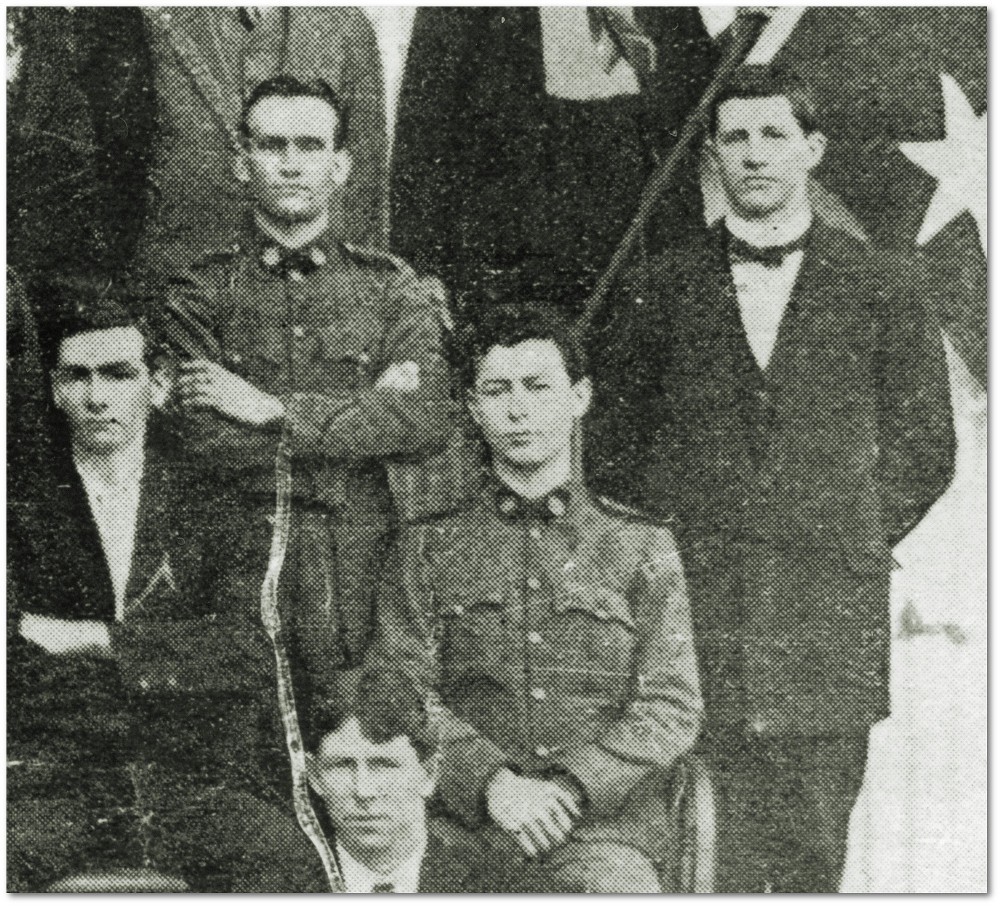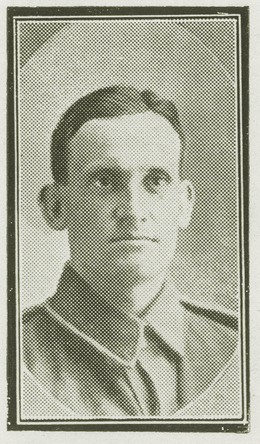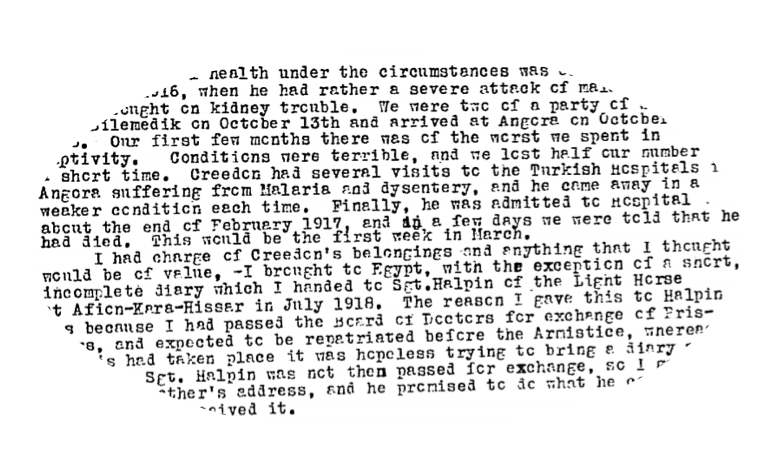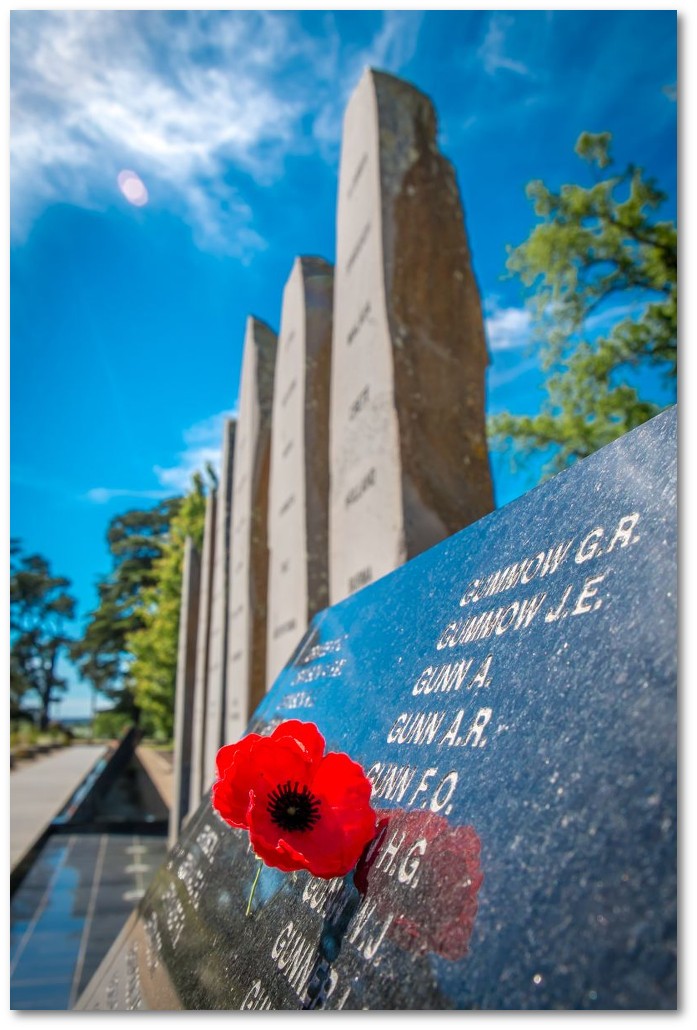In the hands of the Turks
By Marg Powell, Specialist Library Technician, Metadata Services | 13 May 2016
The Diary of Bart Creedon, Prisoner of War
When Private Creedon, 9th Infantry Battalion, took shelter in a dugout on June 1915, he had suffered a blow to the head and been wounded in both hands. He dozed while he waited for dusk, when he woke, to his horror he was looking down three Turkish rifles.

Maryborough volunteers, for the European War, identified top left F.W. Neal, centre D.B. Creedon. Negative number: 46473, State Library of Queensland.
Creedon was taken prisoner during an advance on the Turkish positions at Sniper's Ridge and the Knife Edge, where his group became separated from the rest of the battalion. Tragically Bart Creedon did not survive the conditions of the camps in which he was interned, he died at Angora, Turkey in February 1917.
Fellow prisoner Private Jonas Palfrey Havard, a New Zealander, kept Creedon's belongings and on his own release handed them, including his brief diary, to another POW, Sergeant John Halpin, 12th Light Horse Regiment, who promised to return them to Bart's mother Kate Cowhey in Maryborough.
Creedon's diary was donated to the Australian War Memorial, several copies were made by his friend Lance Corporal Frederick William Neal, one was donated to the State Library of Queensland.
Private Bart Creedon's story can be read through the transcribed copy of his diary held in Brisbane, now available online. Much more of Creedon's story can be revealed however via the correspondence available on his Red Cross Wounded and Missing files, available at the Australian War Memorial.

Portrait of Frederick William Neal, published in The Queenslander Pictorial, 17 October 1914
Lance Corporal Fred Neal wrote to London in 1917, hoping to recover some of his friends personal effects. Neal had enlisted on the same day, with his mate Bart, and was also assigned to the 9th Infantry Battalion.
In 1919 the Red Cross contacted Private Jonas Havard, asking if he could supply them with information about Creedon's care, illness and death.
In his response Havard, who spent quite some time in the company of Creedon, related how his belongings had come to be in the hands of Sergeant Halpin, the circumstances of his death, and place of burial. It would have meant so much to his family.
Havard had been captured in Gallipoli in August 1915, with wounds to his hands, he had also lost sight in one eye. Havard was repatriated to Egypt in 1918 as part of a prisoner exchange program, he was evacuated to England, where he remained until being returned to New Zealand in September 1919.

Red Cross Wounded & Missing file, Daniel Creedon, courtesy of the Australian War Memorial.
While we can observe ANZAC day here in Australia, and at many sites across the globe, we are unable to visit the memorial for Daniel Bartholemew Creedon, originally interred in the Armenian Cemetery in Angora. These graves were undistinguishable after the end of the war and a Special Kipling Memorial was erected in the Baghdad (North Gate) War Cemetery, Iraq.
Further reading:
- OM90-138 D.B. Creedon Diary 1915, State Library of Queensland
- Service record: CREEDON, Daniel Bartholemew, National Archives of Australia
- Service record: HAVARD, Jonas Palfrey, Archives New Zealand
- Service record: HALPIN, John, National Archives of Australia
- Service record: NEAL, Frederick William, National Archives of Australia
- Red Cross Wounded and Missing files: Daniel Creedon, courtesy of the Australian War Memorial
- In the hands of the Turks, Illawarra Mercury,
- Service record: ALLEN, William, #552 9th Battalion. Died whilst POW, 20 December 1916
- Service record: JORDAN, Stanley Rupert #719 9th Battalion. POW, repatriated 1918
- Service record: KING, George Burdett, #1379 9th Battalion. Died whilst POW, 16 August 1918
- Service record: MATTHEWS, Charles, #637 9th Battalion. POW, repatriated 1918
- Service record: O'CALLAGHAN, John #1600 9th Battalion. Died whilst POW, 21 January 1917
- Service record: SULLIVAN, William James #1039 9th Battalion. Killed in action, 28 June 1915
Comments
Your email address will not be published.
We welcome relevant, respectful comments.

